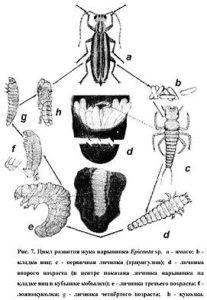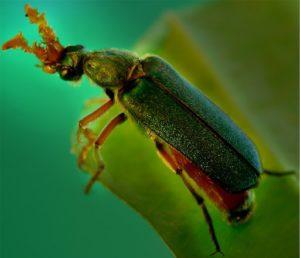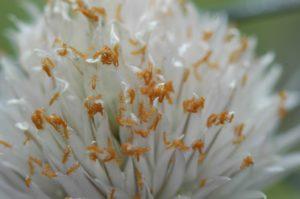Bug beetles: the harm and benefits of a large family
Many insects at first glance seem very vulnerable and completely harmless. But, in the process of their creation, nature nevertheless made sure that they had the opportunity to somehow protect themselves from natural enemies. So some species have learned to disguise themselves, others fly very quickly, run or jump, and still others simply become poisonous. Among the latter are blister beetles, widespread in the Eastern Hemisphere.
Content
Bug beetles: photo
Who are the thugs
Name: Naryvniki family
Latin: MeloidaeClass: Insects - Insecta
Squad: Coleoptera - Coleoptera
 | Habitats: | steppe, semi-desert, tropics |
 | Dangerous for: | many plants, people and animals |
 | Means of destruction: | depends on the species, from biological to chemical methods |
Blisters are called representatives of one of the most famous families of beetles. These insects stand out from the rest due to their bright color, the presence of a strong poison in the blood and the interesting lifestyle of their larvae.
What do burrs look like
Most members of the blister family are medium to large bugs. Their body length can vary from 5 mm to 50 mm. The head is round or triangular in shape, and is equipped with complex compound eyes and antennae. The latter consist of 8-11 segments and in most species they are slightly widened towards the upper margin.
The pronotum in many representatives of this species is the narrowest part of the body. The elytra are quite elastic, oblong in shape and most often painted in bright colors. Most Popular cover color options:
- bright red with black dots;
- black with yellow-orange spots and wide stripes;
- green with a metallic sheen;
- bright orange with small black spots;
- black or blue-black with a metallic sheen.
Females and males usually do not have striking external differences, but in some species one can observe a strong increase in the abdomen in females, or modified antennae in males.

Bug beetles.
Many types of blisters boast highly developed wings, making them highly skilled fliers. The legs of the representatives of this family are well adapted for walking and running. There are a number of spurs on the legs.
In the larval stage, abscesses are very active and lead a predominantly parasitic lifestyle. Immediately after birth, they have well developed legs and their main goal is to move to a place where there is a suitable food source for them. At the next stages of development, the larva spends almost all its time for food.
Blisters Habitat
For a long time, the habitat of blisters was limited to the countries of Europe, Asia and Africa. Insects prefer open steppe and semi-desert areas, and due to their thermophilicity, the bulk of these beetles are found in tropical and subtropical zones. At the moment, these bright bugs can be found on all continents except Antarctica.
Within Russia, different types of blisters live in the following areas of the country:
- Southeast regions;
- European part of the country;
- Southwestern and Eastern Siberia;
- Primorye;
- North Caucasus.
The way of life of the rogues
Adults of most blister species feed exclusively on food of plant origin. Some representatives are aphages and do not need food at all. In the diet of adults may be present:
- leaves;
- young shoots;
- inflorescences;
- flower nectar.
The larvae are mostly parasitic.. Blisters most often lay their eggs near the home of a potential victim, which can be:
- bees;
- This;
- grasshoppers;
- locust.
Transport of the larva
Thanks to well-developed limbs, shortly after birth, the larva climbs the stems of plants and waits for a suitable candidate. As soon as a potential "breadwinner" appears on the horizon, she imperceptibly attaches to his body. The unsuspecting victim delivers a dangerous parasite directly to its nest, where the larva descends from its "transport" and begins to absorb food. Her diet may include:
- oviposition;
- larvae;
- food stocks prepared by adult insects for their offspring.
The harm and benefits of blisters
Since adult blister beetles are phytophages, some of their species can harm crops. This most often occurs during a period of strong population growth. The following types of plants most often suffer from the invasion of abscesses:
- beans;
- potatoes;
- Strawberry;
- bow;
- oats;
- asparagus.
For people and animals
Due to the fault of adult individuals of blisters, not only plants suffer, but also animals. Since the hemolymph of these insects contains a dangerous toxin, they pose a threat to almost all living organisms. The beetles spend most of their time on the leaves and flowers of the plant, so livestock grazing in the fields often eat them along with the grass. Such an addition to a vegetable meal can be dangerous to the life and health of the animal.
The venom of blivers can also be dangerous and for people. Even for an adult, healthy person, one insect eaten can cost a life. If you take this beetle with your bare hands, then he will feel the danger and, in order to protect himself, will release toxic hemolymph from special glands on the legs. After contact with a toxic substance, very unpleasant symptoms begin to appear on the skin:
- burning;
- itching;
- redness;
- the formation of blisters and abscesses.
The only The benefit that blister beetles can bring is the pollination of plants. Species that feed on flower nectar contribute to the pollination of a huge number of different crops. At the same time, the reproduction of some representatives of the flora directly depends on these insects.
Blister larvae
Unlike adult beetles, blister larvae do more good than harm. They often parasitize in locust nests and exterminate the young generation, which significantly affects the number of these insects. And as you know, locusts are the most dangerous pests of cultivated plants.
It is worth noting that the younger generation of some species of blister prefers to parasitize in the nests of honey bees and such a neighborhood can cause serious harm to the bee colony.
The most famous types of blisters
The blisters family includes more than 2000 varieties, but only about 100 of them can be found within Russia. The most common are the following types.
The use of abscesses in traditional medicine
The poisonous substance contained in the blood of blister beetles is called cantharidin. This toxin is very dangerous for human life and health, but despite this, it was widely used as aphrodisiacs until the 20th century.
For the preparation of "healing" powders, ointments and tinctures, representatives of the species - Spanish fly were used.
The use of such drugs, even in small quantities, eventually led to disruption of many vital organs, but even knowing this, many people continued to use them.
Conclusion
Representatives of the blisters family are widespread in many countries. These small, beautiful bugs can easily be found on flowering plants, but do not forget that contact with them can be dangerous. This is especially true for young children, because young researchers always strive to learn everything new.
Previous



great!